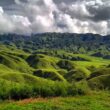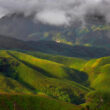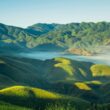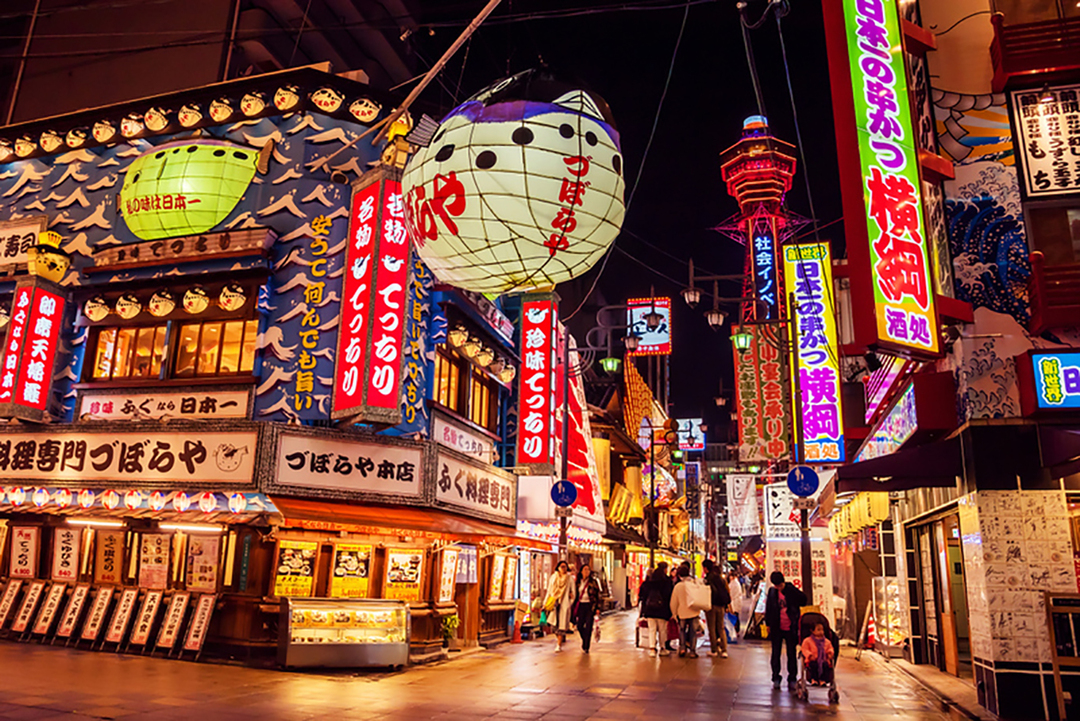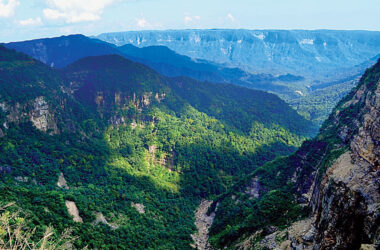Muktinath Temple, located in the Mustang district of Nepal, is a place of spiritual significance for both Hindus and Buddhists. The temple is situated at an altitude of 3,710 meters and is surrounded by beautiful mountains and scenic landscapes. The temple is also known as Mukti Kshetra, which means “place of salvation” in Sanskrit. The temple complex has unique architecture and is home to a sacred flame that has been burning for over 1,000 years. In this article, we will explore the history, significance, and practical information about visiting Muktinath Temple.
History of Muktinath Temple
Muktinath Temple has a rich history that dates back to the 8th century. According to legend, Guru Rinpoche, also known as Padmasambhava, visited the site and meditated there. He is said to have attained enlightenment at this place. Guru Rinpoche is regarded as the founder of Tibetan Buddhism, and his visit to Muktinath Temple is considered to be one of the most significant events in the temple’s history.
Over the years, Muktinath Temple has been a place of pilgrimage for both Hindus and Buddhists. The temple complex was built in the 19th century by a Hindu king named Prithvi Narayan Shah. The temple complex has unique architecture, with a pagoda-style temple dedicated to Lord Vishnu, a Buddhist gompa, and a natural spring that is believed to have healing properties. The temple complex is also home to 108 brass spouts, which are said to represent the 108 heads of Lord Shiva.
Significance of Muktinath Temple
Muktinath Temple is considered to be one of the most sacred sites in Nepal. The temple is believed to be a place of salvation, and pilgrims visit the site to attain moksha, or liberation from the cycle of birth and death. According to Hindu mythology, Lord Vishnu appeared at this site in the form of a flame, and since then, the flame has been burning continuously for over 1,000 years. The flame is said to have healing properties, and pilgrims often take a dip in the nearby natural spring to cleanse their sins and receive blessings from the gods.
For Buddhists, Muktinath Temple is a place of great significance. Guru Rinpoche, who is regarded as the founder of Tibetan Buddhism, is said to have meditated at this site and attained enlightenment. The temple complex also has a Buddhist gompa, which is dedicated to Guru Rinpoche. The Gompa has beautiful murals and thangkas, which depict scenes from the life of Guru Rinpoche.
Practical Information for Visiting Muktinath Temple
Muktinath Temple is located in the Mustang district of Nepal, which is a remote region. The nearest airport is in Jomsom, which is a 20-minute flight from Pokhara. From Jomsom, you can take a jeep or walk to Muktinath Temple. The journey takes around 2-3 hours by jeep and 7-8 hours on foot.
The best time to visit Muktinath Temple is from March to May and September to November. During these months, the weather is pleasant, and the skies are clear, making it easier to enjoy the scenic landscapes. During the monsoon season, which lasts from June to August, the roads can be slippery and dangerous, and flights may be canceled due to bad weather.
When visiting Muktinath Temple, it is essential to dress appropriately. The temple complex is a holy site, and visitors are expected to dress modestly. Women should avoid wearing short skirts or revealing clothing. Men are also expected to dress modestly and avoid wearing shorts or sleeveless shirts. It is also advisable to carry warm clothing as the temperature drops significantly in the evening and early morning.
Visitors are also expected to remove their shoes before entering the temple complex. It is customary to wash your feet before entering the temple, and there are facilities available to do so. Visitors should also be respectful of the religious traditions and customs of the temple. Photography is allowed, but it is essential to be mindful of the people and the surroundings.
In addition to visiting the temple complex, there are many other activities that visitors can enjoy in the Mustang district. The region is known for its scenic landscapes and trekking trails. Visitors can take a trek to the nearby Thorong La Pass, which offers breathtaking views of the Himalayas. There are also hot springs near Muktinath Temple, which are believed to have healing properties. Visitors can take a dip in the hot springs and relax after a long day of trekking.
Accommodation options in the Mustang district are limited, and visitors should be prepared to stay in basic guesthouses or lodges. The facilities are clean, but the amenities are minimal. Visitors should also be prepared for power outages and limited internet connectivity.
Conclusion
Muktinath Temple is a place of great spiritual significance and a popular pilgrimage site in Nepal. The temple complex has unique architecture and is home to a sacred flame that has been burning for over 1,000 years. Visitors can take a dip in the nearby natural spring, which is believed to have healing properties and receive blessings from the gods. The region is also known for its scenic landscapes and trekking trails. Visitors should be prepared to dress modestly, remove their shoes before entering the temple complex, and be respectful of the religious traditions and customs of the temple. Accommodation options in the Mustang district are limited, and visitors should be prepared for basic facilities. A visit to Muktinath Temple is a unique and unforgettable experience that offers a glimpse into the spiritual traditions and cultural heritage of Nepal.
Similar Article – Muktinath from Lucknow
Frequently Asked Questions About Muktinath Temple
Q: What is Muktinath Temple?
A: Muktinath Temple is a sacred Hindu and Buddhist pilgrimage site located in the Mustang district of Nepal. It is believed to be one of the 108 sacred places for Hinduism and one of the most important places for Buddhists.
Q: Why is Muktinath Temple important?
A: Muktinath Temple is important because it is believed to be a place of liberation or “Moksha” for Hindus and Buddhists. It is believed that a visit to the temple will cleanse a person’s sins and lead to their salvation.
Q: What is the history of Muktinath Temple?
A: The history of Muktinath Temple dates back to the 19th century when it was visited by the famous Hindu sage, Guru Rinpoche. The temple has since been renovated and expanded over the years, and it has become a popular pilgrimage site for people from all over the world.
Q: How do I get to Muktinath Temple?
A: The most common way to get to Muktinath Temple is by taking a flight from Kathmandu to Jomsom, followed by a jeep ride to the temple. There are also trekking trails that lead to the temple from various parts of the Mustang district.
Q: What is the best time to visit Muktinath Temple?
A: The best time to visit Muktinath Temple is from March to June and September to November. The weather during these months is pleasant, and the skies are clear, offering beautiful views of the surrounding mountains.
Q: What should I wear when visiting Muktinath Temple?
A: Visitors should dress modestly when visiting Muktinath Temple. Women should avoid wearing short skirts or revealing clothing, and men should avoid wearing shorts or sleeveless shirts. It is also advisable to carry warm clothing as the temperature drops significantly in the evening and early morning.
Q: Are there accommodation options near Muktinath Temple?
A: Yes, there are accommodation options near Muktinath Temple, but they are limited. Visitors should be prepared to stay in basic guesthouses or lodges. The facilities are clean, but the amenities are minimal. Visitors should also be prepared for power outages and limited internet connectivity.
Q: Is photography allowed inside the temple complex?
A: Yes, photography is allowed inside the temple complex, but visitors should be mindful of the people and the surroundings. It is also important to be respectful of the religious traditions and customs of the temple.
Q: What other activities can I do in the Mustang district?
A: The Mustang district is known for its scenic landscapes and trekking trails. Visitors can take a trek to the nearby Thorong La Pass, which offers breathtaking views of the Himalayas. There are also hot springs near the Temple, which are believed to have healing properties. Visitors can take a dip in the hot springs and relax after a long day of trekking.
Q: How long does it take to visit Muktinath Temple?
A: The length of a visit to the Temple can vary depending on the mode of transportation and the activities that visitors wish to do. If traveling by jeep from Jomsom, it takes about 1-2 hours to reach the temple. Trekking to the temple can take anywhere from a few days to a week, depending on the trail and starting point. A typical visit to the temple can last a few hours to a day.
Q: Are there any restrictions on visiting Muktinath Temple?
A: There are no specific restrictions on visiting the Temple, but visitors are expected to dress modestly and be respectful of the religious traditions and customs of the temple. Visitors are also required to remove their shoes before entering the temple complex.
Q: Is there an entrance fee for visiting Muktinath Temple?
A: No, there is no entrance fee for visiting the Temple. However, visitors can donate money to the temple if they wish.
Q: Can I hire a guide or a porter for trekking to Muktinath Temple?
A: Yes, visitors can hire a guide or a porter for trekking to the Temple. It is recommended to hire a guide or a porter, especially for those who are not experienced in trekking or are unfamiliar with the region.
Q: Are there any health risks associated with visiting Muktinath Temple?
A: Altitude sickness is a common health risk associated with visiting the Temple, especially for those who are not accustomed to high altitudes. Visitors are advised to acclimatize themselves to the altitude gradually and stay hydrated. It is also important to carry any necessary medications and consult a doctor before traveling.
Q: Is there any accommodation available at Muktinath Temple?
A: There is no accommodation available at the Temple itself. Visitors can stay at nearby guesthouses and lodges in the Mustang district. The facilities are basic, but clean and comfortable.
Q: Can I bring food and water to Muktinath Temple?
A: Yes, visitors can bring food and water to the Temple. It is recommended to carry a sufficient amount of water as the weather can be dry and the altitude can cause dehydration. Visitors can also buy food and drinks at nearby guesthouses and lodges.
Q: What are the customs and rituals associated with Muktinath Temple?
A: There are several customs and rituals associated with the Temple. Visitors are expected to remove their shoes before entering the temple complex and wash their feet. It is also customary to offer prayers and perform religious rituals, such as taking a dip in the nearby natural spring and receiving blessings from the gods. Visitors should be respectful of the religious traditions and customs of the temple.

